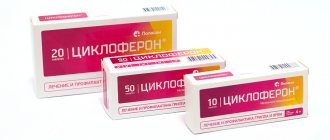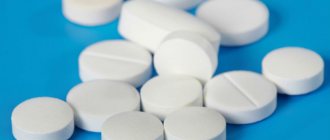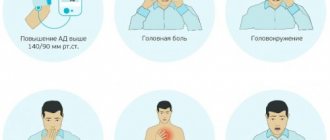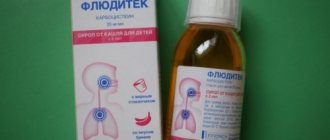Prohibited during pregnancy
Prohibited during breastfeeding
Prohibited for children
Has restrictions for older people
Has limitations for liver problems
Has limitations for kidney problems
The effectiveness and final result of treatment of any disease primarily depends on the selected medications. When choosing drugs to eliminate the symptoms of cardiovascular pathologies, specialists often choose combination medications. They got their name due to their composition.
Such drugs are developed on the basis of several substances at once. Losartan and amlodipine are the most effective combination of active substances for the treatment and prevention of cardiovascular pathologies.
Properties and mechanism of action
The substances are characterized by antihypertensive properties. They complement each other, thereby enhancing the hypotensive effect. They contribute to the expansion of blood vessels and reduction of the walls of the left ventricle (pathology develops as a result of frequent surges in blood pressure). The combination of substances is well absorbed. Metabolism occurs in the liver.
Due to the fact that losartan affects the RAAS and leads to inhibition of antiogenesis II, and amlodipine is a blocker of slow calcium channels, the most pronounced hypotensive effect is observed.
Amlodipine
The substance is a dihydropyridine derivative and is an optically passive combination of optically active isomers. It prevents calcium from entering myocardial cells. A decrease in blood pressure occurs as a result of relaxation of the smooth muscles of the arterial vessels. In this case, there is no negative effect on myocardial contractility or atrioventricular conduction.
Penetrating into the body, amlodipine helps improve blood flow in the kidneys and reduce vascular resistance.
Mechanism of action of Amlodipine
Experts conducted a number of studies and found that the substance does not affect exercise tolerance, as well as the concentration of lipids in the blood in patients with heart failure (chronic). After taking a drug based on this component, the effect occurs within 2-3 hours and lasts for a day.
Losartan
The substance is a synthetic angiotensin receptor antagonist. It gently blocks AT-1 type receptors. Helps reduce arterial vasoconstriction and prevents fluid and sodium retention in the body. Used in the treatment of heart failure, hypertension, ischemic disorders. The substance prevents the progression of heart failure after myocardial infarction.
Action of Losartan
It also leads to increased exercise tolerance. The effect of taking the drug occurs after 5-6 hours. Its decrease occurs within 24 hours. Losartan is absorbed from the gastrointestinal tract. Excreted through the intestines and kidneys.
Compatibility
Together, losartan and amlodipine are often prescribed, since this combination has a more pronounced effect due to a decrease in peripheral resistance.
Since they affect blood pressure in different ways, their actions are enhanced and the desired result occurs much faster. This combination is considered absolutely safe for patients.
Combination drugs (hereinafter referred to as LP), which include both components, improve the effectiveness of therapeutic measures in diagnosing HF (heart failure), angina pectoris, cerebral infarction and cardiac hypertrophy. With simultaneous use, the risk of negative reactions of the body to therapy methods is significantly reduced.
What is more effective?
Since both substances have antihypertensive properties, patients often wonder which is better. It's actually quite difficult to answer. The fact is that they belong to different groups and contribute to the normalization of blood pressure, having different effects.
These substances are used in combination to achieve the most positive effect. They enhance each other's effects and speed up the healing process.
Description of the drug LOSARTAN PLUS
Concomitant use with potassium-sparing diuretics (spironolactone, eplerenone, triamterene, amiloride), potassium preparations or potassium-containing salt substitutes, as well as the use of other drugs that increase the concentration of potassium in the blood plasma, increase the risk of developing hyperkalemia.
NSAIDs, incl. selective COX-2 inhibitors may reduce the effect of diuretics and other antihypertensive agents, including losartan.
The antihypertensive effect of losartan, like other antihypertensive drugs, may be reduced when using indomethacin.
Double blockade of the RAAS, i.e. the addition of an ACE inhibitor to therapy with an angiotensin II receptor antagonist is possible only in selected cases under careful monitoring of renal function.
In patients with atherosclerosis, heart failure or diabetes mellitus with target organ damage, dual blockade of the RAAS (with simultaneous use of angiotensin II receptor antagonists, ACE inhibitors or aliskiren) is accompanied by an increased incidence of arterial hypotension, syncope, hyperkalemia and renal dysfunction (including acute renal failure) in comparison with the use of a drug from one of the listed groups.
Possible reduction in the excretion of lithium ions. Therefore, when using angiotensin II receptor antagonists concomitantly with lithium salts, serum lithium concentrations should be carefully monitored.
When used concomitantly with thiazide diuretics, drugs such as ethanol, barbiturates and opioid analgesics may potentiate the risk of orthostatic hypotension.
With simultaneous use, it is possible to enhance the hypoglycemic effect of oral hypoglycemic agents (sulfonylurea derivatives) and/or insulin in patients with diabetes mellitus; With such combinations, an increase in glucose tolerance is possible, which may require dose adjustment of oral hypoglycemic agents and/or insulin.
When used simultaneously with other antihypertensive drugs, there is an additive effect.
The absorption of hydrochlorothiazide is impaired in the presence of cholestyramine and colestipol.
When used simultaneously with GCS and ACTH, a pronounced decrease in electrolyte levels is observed, in particular hypokalemia.
There is a decrease in the severity of the therapeutic effect of hydrochlorothiazide with the use of pressor amines (for example, epinephrine (adrenaline), norepinephrine (norepinephrine)).
Hydrochlorothiazide enhances the effect of non-depolarizing muscle relaxants (for example, tubocurarine chloride).
Diuretics reduce the renal clearance of lithium and increase the risk of lithium toxicity. Simultaneous use is not recommended.
When used simultaneously with barbiturates, narcotic analgesics, antidepressants, ethanol, the risk of developing orthostatic hypotension increases.
Medicines used to treat gout (probenecid, sulfinpyrazone and allopurinol):
- hydrochlorothiazide can increase the serum concentration of uric acid, so it may be necessary to adjust the dose of uricosuric drugs - increasing the dose of probenecid or sulfinpyrazone. Concomitant use of thiazide diuretics may increase the incidence of hypersensitivity reactions to allopurinol.
Concomitant use with cyclosporine may increase the risk of developing hyperuricemia and lead to an exacerbation of gout.
Anticholinergics (eg, atropine, biperiden) increase the bioavailability of thiazide diuretics by reducing gastrointestinal motility and the rate of gastric emptying.
Thiazide diuretics can reduce the renal excretion of cytotoxic drugs (cyclophosphamide, methotrexate) and enhance their myelosuppressive effect.
When salicylates are used in high doses, hydrochlorothiazide may enhance their toxic effects on the central nervous system.
There is limited data on the development of hemolytic anemia with the simultaneous use of hydrochlorothiazide and methyldopa.
Hypokalemia or hypomagnesemia caused by thiazide diuretics can lead to the development of arrhythmia during the use of cardiac glycosides.
List of medications containing these substances
The combination of these substances underlies several drugs that have a similar mechanism of action on the body and help normalize blood pressure. They may differ from each other in the list of additional components and cost.
Both substances can be seen in the following medications: Amosartan, Lortenza, Lozap AM, Amzaar. The listed drugs are prescribed to patients with the development of cardiovascular disorders.
Experts consider Lortenza, Amzaar and Lozap AM to be the most effective of the existing combination drugs. Medicines normalize blood pressure and prevent the development of complications.
They are prescribed to patients whose treatment requires the use of combination therapies. Combination medications are much more effective than monotherapy. Despite the fact that drugs are analogues, they are characterized by a number of features and have minor differences.
Lortenza
The combination drug is marketed in the form of tablets with different dosages.
The color of the tablets depends on the dosage:
5 mg + 50 mg. One tablet contains 6.94 mg of amlodipine besylate and 163.55 mg of losartan (light brown);- 10 mg + 50 mg. The ratio of the main components in 1 tablet is 13.88 mg of amlodipine and 163.55 mg of losartan (brown-red);
- 5 mg + 100 mg (6.94 mg/327.1 mg; pink tablets);
- 10 mg + 100 mg: 13.88 mg/327.1 mg (white with a slight yellow tint).
Penetrating into the body, the active components of the tablets begin to act. One dilates blood vessels, and the second affects the RAAS. As a result, a decrease in blood pressure is observed. The average cost is 300 rubles.
Amzaar
The drug is also available in the form of tablets for oral use, the color of which depends on the composition. One white tablet contains 50 mg of losartan and 5 mg of amlodipine. The pink tablet consists of 5 mg amlodipine and 100 mg losartan. The drug also contains auxiliary components: sodium carboxymethyl starch, microcrystalline cellulose, titanium dioxide, magnesium stearate, hypromellose, talc. The tablets are film-coated.
Algorithm for prescribing Amzaar
The drug has a pronounced hypotensive effect. Prescribed to patients with symptoms of arterial hypertension. The cost of the drug is 590 rubles.
Lozap AM
In Russian pharmacies it is sold in the form of tablets. This product is also available in different dosages:
- 5 mg and 50 mg;
- 5 mg and 100 mg.
The list of additional components includes: microcrystalline cellulose, titanium dioxide, mannitol, crospovidone, magnesium stearate.
The combined drug belongs to the group of drugs that block calcium channels and act as angiotensin receptor antagonists. Penetrating into the body, the components of the drug help reduce the vasoconstrictor effects and prevent the entry of calcium into the cells.
The decrease in pressure does not affect the heart rate. The average price is 350-600 rubles, depending on the dosage.
Amlodipine + Losartan (Amlodipinum + Losartanum)
The hypotensive effect may be enhanced when used simultaneously with other antihypertensive drugs, so the simultaneous administration of different antihypertensive drugs should be justified.
Amlodipine
Amlodipine can be safely used for the treatment of arterial hypertension together with thiazide diuretics, alpha-blockers or ACE inhibitors. Unlike other BMCCs, no clinically significant interaction with amlodipine (III generation BMCCs) was detected when used together with NSAIDs, incl. and with indomethacin. It is possible to enhance the hypotensive effect of BMCC when used together with thiazide and loop diuretics, ACE inhibitors and nitrates, as well as to enhance their hypotensive effect when used together with alpha1-blockers and antipsychotics.
Concomitant use of amlodipine with CYP3A4 inhibitors requires careful monitoring of symptoms of hypotension and peripheral edema. With the simultaneous administration of diltiazem at a dose of 180 mg/day and amlodipine at a dose of 5 mg/day to elderly patients, the systemic exposure of amlodipine increases by 60%. Erythromycin, when used together, increases the Cmax of amlodipine in young patients by 22%, and in elderly patients by 50%. At the same time, strong CYP3A4 inhibitors (ketoconazole, itraconazole, ritonavir) may increase plasma concentrations of amlodipine to an even greater extent.
Despite the fact that an accurate quantitative assessment of the interaction between amlodipine and CYP3A4 inducers (for example, rifampicin, St. John's wort) has not been obtained, constant monitoring of blood pressure is recommended during their combined use.
Beta-blockers, when administered simultaneously with amlodipine, may cause an exacerbation of heart failure.
Although negative inotropic effects have generally not been observed in amlodipine studies, some CBMCs may enhance the negative inotropic effects of antiarrhythmic drugs that prolong the QT interval (eg, amiodarone and quinidine).
A single dose of 100 mg of sildenafil in patients with arterial hypertension does not affect the pharmacokinetic parameters of amlodipine.
Repeated use of amlodipine at a dose of 10 mg and atorvastatin at a dose of 80 mg is not accompanied by significant changes in the pharmacokinetics of atorvastatin.
Ethanol (drinks containing alcohol): amlodipine with single and repeated use in a dose of 10 mg does not affect the pharmacokinetics of ethanol.
Neuroleptics and isoflurane - enhance the hypotensive effect of dihydropyridine derivatives.
With intravenous administration of dantrolene during treatment with amlodipine, collapse, arrhythmias, decreased strength of heart contractions and hyperkalemia are possible.
Calcium supplements can reduce the effect of BMCC.
When amlodipine is used together with lithium preparations, it is possible to increase the manifestation of neurotoxicity (nausea, vomiting, diarrhea, ataxia, tremor, tinnitus).
Amlodipine does not change the pharmacokinetics of cyclosporine.
It has no effect on the serum concentration of digoxin and its renal clearance.
Does not significantly affect the effect of warfarin (prothrombin time).
Cimetidine does not affect the pharmacokinetics of amlodipine.
In in vitro studies, amlodipine does not affect the plasma protein binding of digoxin, phenytoin, warfarin and indomethacin.
Grapefruit juice: simultaneous single administration of 240 mg of grapefruit juice and 10 mg of amlodipine orally is not accompanied by a significant change in the pharmacokinetics of amlodipine.
Aluminum- or magnesium-containing antacids: their single dose does not have a significant effect on the pharmacokinetics of amlodipine.
Losartan
As with other agents that block the formation of angiotensin II and its effects, concomitant administration of potassium-sparing diuretics (eg, spironolactone, triamterene, amiloride), potassium supplements, and potassium-containing salt substitutes may increase serum potassium levels.
In some patients with impaired renal function who have been treated with NSAIDs, including selective COX-2 inhibitors, co-administration of ACE inhibitors and/or ARBs, including losartan, may cause further deterioration of renal function, leading to the development of acute renal failure. Usually this effect is reversible. NSAIDs, including selective COX-2 inhibitors, may reduce the effect of angiotensin II receptor blockers, including losartan. Therefore, the hypotensive effect of angiotensin II receptor antagonists may be weakened by simultaneous use of NSAIDs, in particular selective COX-2 inhibitors. Thus, simultaneous use of a combination with NSAIDs should be done with caution in patients with impaired renal function.
Double blockade of the RAAS: it has been found that in patients with atherosclerosis, heart failure or diabetes with target organ damage, double blockade of the RAAS (simultaneous use of ACE inhibitors and ARB drugs) is associated with more frequent complications of therapy in the form of arterial hypotension, fainting (syncope), hyperkalemia and renal dysfunction (including acute renal failure) compared with monotherapy with each drug. In this regard, combined treatment with ACE inhibitors and ARB drugs requires an individualized approach and constant monitoring of the functional activity of the kidneys.
There were no pharmacokinetically significant interactions between the drug and drugs such as hydrochlorothiazide, digoxin, warfarin, cimetidine and phenobarbital. Taking rifampin, an inducer of drug metabolism, reduces the concentrations of losartan and its active metabolite.
Two inhibitors of the CYP3A4 isoenzyme have been studied in humans. Ketoconazole does not affect the biotransformation of losartan administered intravenously to its active metabolite, and erythromycin does not have a clinically significant effect on the pharmacokinetics of losartan when administered orally.
Fluconazole, an inhibitor of the CYP2C9 isoenzyme, reduces the concentration of the active metabolite and increases the concentration of losartan in the blood plasma; however, the pharmacodynamic significance of the combined use of losartan and inhibitors of the CYP2C9 isoenzyme has not been established. It has been shown that individuals whose body does not convert losartan into the active metabolite have a very rare and specific defect in the CYP2C9 isoenzyme. These data indicate that the biotransformation of losartan to its active metabolite is mediated predominantly by the CYP2C9 isoenzyme rather than by CYP3A4.
Indications and contraindications
Experts prescribe them to patients who are not suitable for monotherapy. The main indication for the use of drugs developed on the basis of these substances is arterial hypertension in patients with:
- diabetes mellitus;
- hyperthyroidism;
- narrowing of the arteries of the kidneys;
- atherosclerosis.
Hyperthyroidism
Before taking medications, you need to familiarize yourself with the contraindications:
- liver/renal failure;
- severe form of hypertension;
- hypersensitivity to active ingredients;
- tachycardia;
- bradycardia;
- presence of aortic stenosis.
Patients with hyperkalemia, mitral stenosis, or after a myocardial infarction are allowed to take medications with the utmost caution, strictly observing the dosage prescribed by the doctor.
Pregnancy is also a contraindication. This is associated with the occurrence of fetal developmental abnormalities. If a woman has been undergoing treatment and finds out she is pregnant, use should be stopped immediately.
It is not recommended to take medications while breastfeeding. Experts conducted studies with animals and found that a large number of drug components penetrate into milk. In order not to harm the health of the newborn baby, you should abandon the course of treatment with these drugs.
In pediatrics, there is no information on the safety of substances when used by children under the age of majority. In this regard, medications are prescribed to persons over 18 years of age.
Instructions for use
Losartan plus amlodipine is taken once a day (1 tablet) and washed down with a glass of clean water. The main meal does not affect the effectiveness of the medicine.
The maximum effective dosage is determined by the attending physician. First of all, you need to decide on the doses of the main components, respectively, one pill is 5 mg + 100 mg or 5 mg + 50 mg. Selecting a dosage without special knowledge can cause harm to the entire body.
Use of Losartan for hypertension
Patients who have renal failure with creatinine clearance levels of 50-20 ml/min can take a standard dose of the drug (1 tablet/1 time). In old age and in the presence of liver failure, the maximum dose of losartan should not exceed 50 mg. When using diuretics, its dose should be reduced to 25 mg.
Interaction with other tools
When losartan and amlodipine are taken in combination with drugs that have antihypertensive properties, the effect may be enhanced. As a result, a sharp and strong decrease in blood pressure is recorded, which causes discomfort in the patient. Therefore, you should not combine medications on your own.
Amlodipine should not be combined with:
- beta-blockers (increases the risk of complications of heart failure);
- strong inhibitors (lead to an increase in the concentration of the substance in the blood);
- quinidine and amiodarone (the negative ionotropic effect increases).
Side effects of Amlodipine
Losartan is not used in combination with:
- potassium-sparing diuretics (may lead to increased potassium concentrations);
- fluconazole (increases the amount of the substance in the blood);
- rifampin (has a negative effect on the effectiveness of drugs).
If the patient is already undergoing medication treatment, the doctor should be informed at the first consultation.
Side effects
With increased sensitivity to the active substances, negative reactions may occur.
| System | Side effects |
| Nervous system | Migraine, dizziness, increased drowsiness. |
| Hearing organs | Systemic dizziness. |
| Subcutaneous tissue/skin | Allergic rashes, hives, severe itching. |
| Respiratory system | Slight shortness of breath. |
| Digestive system | Dyspepsia, constipation, vomiting. |
| Urinary system | Frequent urge to urinate. |
Also, taking medications may be accompanied by pain in the chest area, weakness, and peripheral edema.
AMLOTOP PLUS TAB. P/P/O 5MG+50MG No. 30
The antihypertensive effect of Amlotop Plus may be enhanced when used simultaneously with other antihypertensive drugs. Therefore, the simultaneous use of various antihypertensive drugs should be justified.
Amlodipine
The simultaneous use of amlodipine with thiazide diuretics, alpha-blockers or ACE inhibitors is considered safe.
Unlike other BMCCs, no clinically significant interaction with amlodipine (III generation BMCCs) was detected when used simultaneously with nonsteroidal anti-inflammatory drugs (NSAIDs), including indomethacin. It is possible to enhance the antihypertensive effect of BMCC when used simultaneously with thiazide and loop diuretics, ACE inhibitors and nitrates, as well as when used simultaneously with alpha1-blockers and antipsychotics.
Concomitant use of amlodipine with inhibitors of the CYP3A4 isoenzyme requires careful monitoring of symptoms of arterial hypotension and peripheral edema.
With simultaneous use of diltiazem at a dose of 180 mg per day and amlodipine at a dose of 5 mg per day in elderly patients, the systemic exposure of amlodipine increases by 60%.
Erythromycin, when used simultaneously, increases the Cmax of amlodipine in blood plasma in young patients by 22%, and in elderly patients by 50%.
At the same time, strong inhibitors of the CYP3A4 isoenzyme (ketoconazole, itraconazole, ritonavir) can increase the concentration of amlodipine in the blood plasma to an even greater extent.
Despite the fact that an accurate quantitative assessment of the interaction between amlodipine and inducers of the CYP3A4 isoenzyme (for example, rifampicin, St. John's wort preparations) has not been obtained, regular monitoring of blood pressure is recommended against the background of their simultaneous use.
Beta-blockers, when used simultaneously with amlodipine, can cause an exacerbation of CHF.
Although negative inotropic effects have generally not been observed in amlodipine studies, some CBMCs may enhance the negative inotropic effects of antiarrhythmic drugs that cause QT prolongation (eg, amiodarone and quinidine).
A single dose of 100 mg of sildenafil in patients with hypertension does not affect the pharmacokinetic parameters of amlodipine.
Repeated use of amlodipine at a dose of 10 mg and atorvastatin at a dose of 80 mg is not accompanied by significant changes in the pharmacokinetics of atorvastatin.
Ethanol (drinks containing alcohol): amlodipine with single and repeated use in a dose of 10 mg does not affect the pharmacokinetics of ethanol.
Neuroleptics and isoflurane enhance the antihypertensive effect of dihydropyridine derivatives.
When dantrolene is administered intravenously during amlodipine therapy, collapse, arrhythmias, decreased heart rate, and hyperkalemia are possible.
Calcium supplements may reduce the antihypertensive effect of BMCC.
With the simultaneous use of amlodipine with lithium preparations, an increase in the manifestation of neurotoxicity (nausea, vomiting, diarrhea, ataxia, tremor, tinnitus) is possible.
It has no effect on the serum concentration of digoxin and its renal clearance.
Does not significantly affect the effect of warfarin (prothrombin time).
Cimetidine does not affect the pharmacokinetics of amlodipine.
in vitro studies
amlodipine does not affect the binding of digoxin, phenytoin, warfarin and indomethacin to plasma proteins.
A simultaneous single dose of 240 mg of grapefruit juice and 10 mg of amlodipine orally is not accompanied by a significant change in the pharmacokinetics of amlodipine.
A single dose of aluminum or magnesium-containing antacids does not have a significant effect on the pharmacokinetics of amlodipine.
When used concomitantly with amlodipine, there is a risk of increasing the concentration of tacrolimus in the blood plasma, but the pharmacokinetic mechanism of this interaction has not been fully studied. To prevent the toxic effect of tacrolimus when used concomitantly with amlodipine, the concentration of tacrolimus in the blood plasma should be monitored and the dose of tacrolimus should be adjusted if necessary.
Clarithromycin is an inhibitor of the CYP3A4 isoenzyme. With simultaneous use of amlodipine and clarithromycin, the risk of developing arterial hypotension is increased. Close medical monitoring of patients receiving amlodipine concomitantly with clarithromycin is recommended.
Drug interaction studies have not been conducted with cyclosporine and amlodipine in healthy volunteers or other patient populations, except for renal transplant patients in whom variable trough concentrations (mean: 0%-40%) of cyclosporine were observed. With the simultaneous use of amlodipine in patients who have undergone kidney transplantation, the concentration of cyclosporine in the blood plasma should be monitored and, if necessary, its dose should be reduced.
Clinical interaction studies have shown that amlodipine does not affect the pharmacokinetics of atorvastatin, digoxin or warfarin.
Simultaneous repeated use of amlodipine at a dose of 10 mg and simvastatin at a dose of 80 mg leads to an increase in simvastatin exposure by 77%. The dose of simvastatin when used simultaneously with amlodipine should not exceed 20 mg once a day.
Losartan
As with the use of other drugs that block the formation of angiotensin II and its effects, the simultaneous use of potassium-sparing diuretics (for example, spironolactone, triamterene, amiloride, eplerenone), potassium supplements and potassium-containing salt substitutes may lead to an increase in serum potassium.
As with the use of other drugs that affect sodium excretion, losartan can reduce the excretion of lithium, therefore, when using lithium preparations and ARA II simultaneously, it is necessary to carefully monitor the concentration of lithium in the blood serum.
In some patients with impaired renal function who have been treated with DMARDs, including selective cyclooxygenase-2 (COX-2) inhibitors, concomitant use of ACE inhibitors and/or ARB II, including losartan, may cause further deterioration of renal function, leading to the development of acute renal failure. (OPN). Usually this effect is reversible. NSAIDs, including selective COX-2 inhibitors, may reduce the effect of ARB II, including losartan. Therefore, the antihypertensive effect of ARA II may be weakened by simultaneous use of NSAIDs, in particular selective COX-2 inhibitors. Thus, simultaneous use of the amlodipine/losartan combination with NSAIDs should be used with caution in patients with impaired renal function.
Double blockade of the RAAS (simultaneous use of ACE inhibitors and ARB II) in patients with atherosclerosis, CHF or diabetes mellitus with target organ damage is associated with a higher incidence of arterial hypotension, syncope, hyperkalemia and renal dysfunction (including acute renal failure) compared with the use of a drug from one of the listed groups. Double blockade of the RAAS is possible only in selected cases under careful monitoring of renal function.
The simultaneous use of losartan with aliskiren is contraindicated in patients with diabetes mellitus or impaired renal function (creatinine clearance less than 60 ml/min) and is not recommended in other patients.
There were no pharmacokinetically significant interactions of losartan with drugs such as hydrochlorothiazide, digoxin, warfarin, cimetidine and phenobarbital.
Taking rifampicin, an inducer of drug metabolism, reduces the concentrations of losartan and its active metabolite in the blood plasma.
In clinical studies, the use of two inhibitors of the CYP3A4 isoenzyme was studied. Ketoconazole did not affect the metabolism of losartan to its active metabolite after intravenous administration of losartan. Erythromycin did not have a clinically significant effect on the pharmacokinetics of losartan when taken orally.
Fluconazole, an inhibitor of the CYP2C9 isoenzyme, reduces the concentration of the active metabolite of losartan and increases the concentration of losartan in the blood plasma, but the pharmacodynamic significance of the simultaneous use of losartan and inhibitors of the CYP2C9 isoenzyme has not been established. It has been shown that patients who do not metabolize losartan into the active metabolite have a very rare and specific defect in the CYP2C9 isoenzyme. These data indicate that the metabolism of losartan to its active metabolite is mediated primarily by CYP2C9 rather than by CYP3A4.







